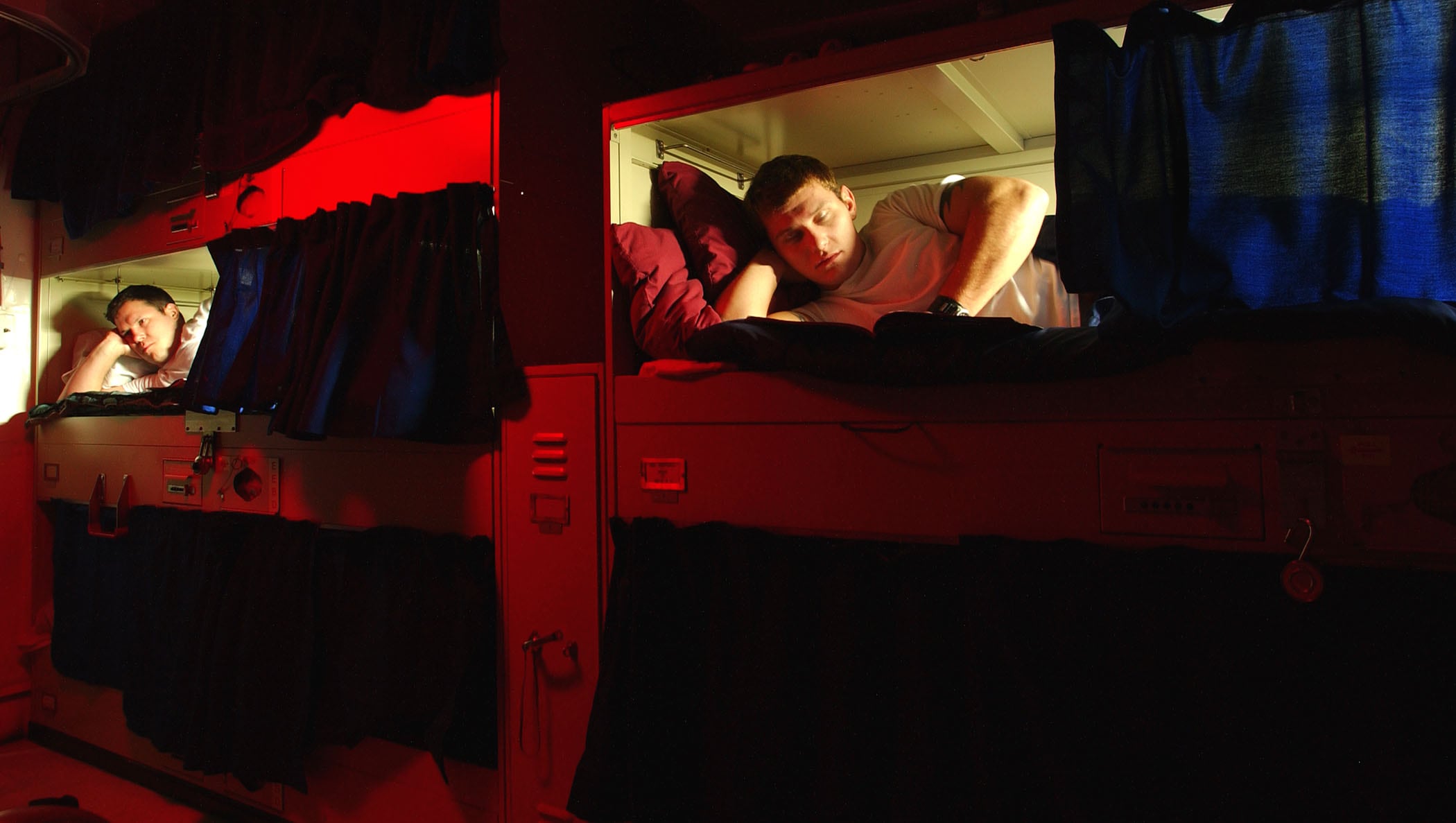Following a pair of deadly warship collisions in the Western Pacific in 2017, the Navy issued formal rest guidance for sailors at sea.
Now the sea service wants to know more about the quality of the sleep sailors are getting.
In a recent study, a Naval Postgraduate School team replaced the standard issue rack curtains on the San Diego-based guided-missile destroyer Paul Hamilton and outfitted its entire berthing with thicker sets. The curtains use a magnet to hold them together in an effort to minimize movement and light infiltration while adding privacy.
Researchers also gave sleep watches to 50 volunteers of varying rates scattered across the ship. Light and temperature monitors were also installed inside and outside of their racks to track environmental changes.
The study is led by Nita Shattuck, a behavioral scientist at the Naval Postgraduate School who has been studying sleep across the fleet since 2002.
“The whole premise is to improve the quality of life of sailors on the ships,” Shattuck told Navy Times in a phone interview.
The curtains cost about $35,000 and were made by Navy Rack Packs, a company operated by a submariner’s wife, Shattuck said.
Failure to get enough sleep can contribute to impaired memory and trigger serious health problems, including heart attacks and high blood pressure.
Investigators cited fatigue or poorly managed sleep as contributing factors in separate collisions of the guided- missile destroyers Fitzgerald and John McCain in 2017, accidents that killed 17 sailors.
The sea service’s comprehensive review of the entire force released in the wake of the mishaps pointed to two similar incidents involving other warships.
As a result, the Navy began to probe how sleep affects readiness. Surface fleet leaders were required to implement watch schedules and shipboard routines that better sync with circadian rhythms and natural sleep cycles.
Shattuck said the curtain study doesn’t stem from the collisions. It’s a culmination of years of work and visits to various vessels during which she learned that standard curtains provide privacy but “nothing else.”
She’s awaiting responses to questionnaires from the 50 volunteers before researchers can begin gauging their experiences with the different curtain sets. The entire crew will be surveyed about their experiences when their vessel returns from deployment.
Results from the study are expected later this year.
Data they’ll look for include light infiltration, noise suppression and heat retention. Another curtain design is in the works to look at cutting down on more noise, Shattuck added.
Early reviews from sailors appear to be positive. Paul Hamilton’s crew is “keeping the curtains," Shattuck said.
Retrofitting rack curtains to improve sleep quality is just one of the issues Shattuck’s team is studying on the Paul Hamilton.
They’ve installed 15 blue-enriched white lights in the destroyer’s combat information center, the darkened electronic nerve center of a warship, to study their effects on the crew.
Blue-enriched lights have been found to suppress the production of melatonin, a hormone that helps regulate sleep, Shattuck said.
Researchers also issued 20 pairs of blue light goggles to night watchstanders to adjust and stabilize their circadian rhythms.
The later studies are part of a three-year look into shipborne habitability funded by the Naval Advanced Medical Development Program, Shattuck said.
Navy Times editor’s note: Due to a Navy error, we changed the price for the curtains. They’re about $35,000 for this lot.
RELATED

Courtney Mabeus-Brown is the senior reporter at Air Force Times. She is an award-winning journalist who previously covered the military for Navy Times and The Virginian-Pilot in Norfolk, Va., where she first set foot on an aircraft carrier. Her work has also appeared in The New York Times, The Washington Post, Foreign Policy and more.




